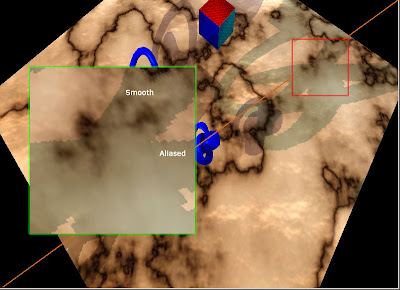There's no reason to choose shadow mapping but the performances: shadow volumes are more accurate, because a shadow map is a simple texture spread on a scene and used for depth comparisons. It's obvious that texture's detail affects render realism, and all sort of aliasing will happen.
The quickest way to improve an image-space based algorythm is to improve the image.. space! You should render the scene with higher resolution. But you can't. Reason is that even if you raise the viewport size, anything greater than the actual container window will be dropped.
There are also restrictions for the texture shape and dimensions, but you could get around them using some of the latest extensions (ARB_texture_rectangle, ARB_texture_non_power_of_two)... but anyway, the problem remains: we are in need for detail. There are sophisticated geometric solutions, such as trapezoidal/perspective shadow maps and cascading shadow maps, but we could simply... render elsewhere!
Here come frame buffer objects. They are basically "containers" that you can use as targets for your renders. You can also use them to directly render on a texture, and this is our case: we render there our huge shadow map.

The difference is clear and performance hit is not dramatic. The coolest part is that using FBOs does not take modifications to previous routines (just bind the directly generated texture as usual!), and can be turned on in every moment. Approved!

酒店打工
ReplyDelete酒店兼職
台北酒店
打工兼差
酒店工作
酒店經紀
禮服店
酒店兼差
酒店上班
酒店PT
酒店
酒店喝酒
酒店消費
喝花酒
粉味